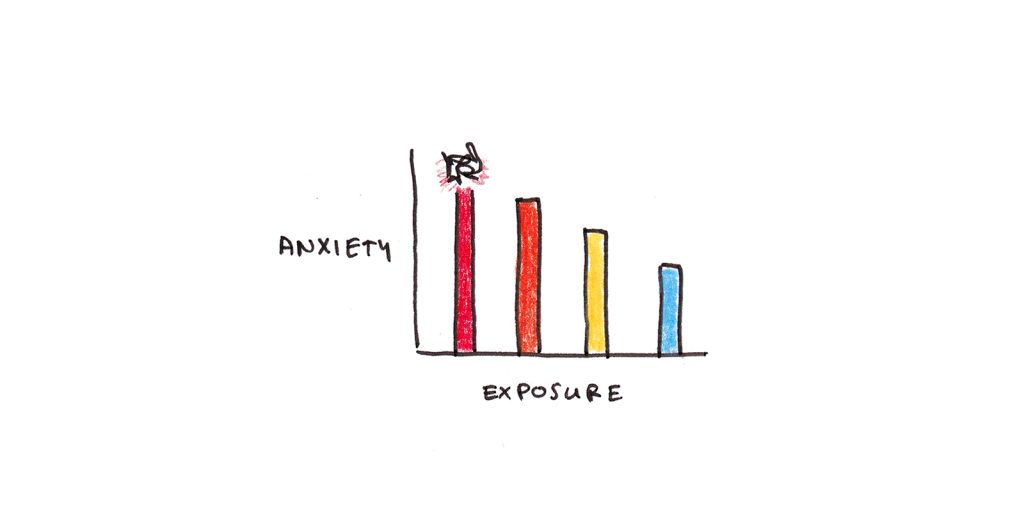You know the feeling: sweaty palms, tightness in your chest and the tunnel vision that centers on the exam paper sitting in front of you. You feel like you should know the answers, but you keep forgetting. You glance at the clock and realize you’re falling behind. When the exam finishes you feel awful—you know that you knew more than what you wrote down on the page.
Why do we get test anxiety and how can we approach any exam with confidence?
In the previous two essays in this series (here and here), I’ve already pointed to a key cause: we don’t know how to study effectively.
Cognitive illusions about memory and understanding are pervasive. Often the reason we underperform on exams is because we actually aren’t learning as much as we think we are. Fixing flawed studying strategies is an essential first step.
Yet if you think anxiety makes it harder to perform well, you’re not alone. Research shows that anxiety can lower our working memory capacity by introducing distracting thoughts. This mental bandwidth is essential for cognitive performance, and is one reason why research shows a low level of general arousal is better for complex tasks.
How to Beat Back Test Anxiety
Unfortunately, it’s difficult to simply wish away our anxieties. Just because you know you’d perform better without the stress doesn’t mean you can will yourself to relax during exam time.
The good news is that there’s a remarkably effective procedure for dealing with excessive anxieties: exposure.
Neuroscientist and anxiety researcher Joseph LeDoux remarks that exposure therapy offers help for dealing with anxiety in around 70% of cases. Other researchers note that it often works as well or better than pharmaceutical interventions.
The basic idea is this: our fears are controlled by primitive evolutionary circuits in our brain. Although the exact process of forming pathological fears is not always well understood, we do have a good idea of what diminishes them. By having direct exposure to the source of your fears, in an environment that is safe, you can reduce their severity.

This means for test anxiety, there’s a few key steps you can take to feel calm on exam day:
- Do practice tests under real time pressure. This not only provides exposure, but is also a highly effective studying technique.
- If possible, do practice tests in the actual testing room. Exposing yourself to the real context makes the transfer of the learned behavior more likely.
- Visualize the test experience. When realistic exposure isn’t possible, say because there are no practice tests or because the testing environment is inaccessible, visualization can also help.
Preparing Your Mind (and Emotions) for Learning
Learning well ultimately isn’t just about cognitive tricks for memory and practice. It’s about managing your emotions: staying calm, focused and even excited about learning.
However, just as there are cognitive illusions for what works when studying, we have emotional illusions about how to self-regulate our reactions to stress and difficulty. Instead of facing realistic simulations of our fears, we engage in obsessive behaviors to try to neutralize the stressor mentally. These safety behaviors, however, can actually make the anxiety worse!
By applying effective, research-based techniques, we can make learning more successful and stress-free.


 I'm a Wall Street Journal bestselling author, podcast host, computer programmer and an avid reader. Since 2006, I've published weekly essays on this website to help people like you learn and think better. My work has been featured in The New York Times, BBC, TEDx, Pocket, Business Insider and more. I don't promise I have all the answers, just a place to start.
I'm a Wall Street Journal bestselling author, podcast host, computer programmer and an avid reader. Since 2006, I've published weekly essays on this website to help people like you learn and think better. My work has been featured in The New York Times, BBC, TEDx, Pocket, Business Insider and more. I don't promise I have all the answers, just a place to start.